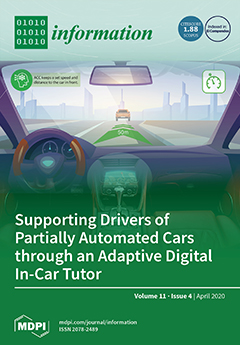Open AccessDiscussion
Checklist for Expert Evaluation of HMIs of Automated Vehicles—Discussions on Its Value and Adaptions of the Method within an Expert Workshop
by
Nadja Schömig, Katharina Wiedemann, Sebastian Hergeth, Yannick Forster, Jeffrey Muttart, Alexander Eriksson, David Mitropoulos-Rundus, Kevin Grove, Josef Krems, Andreas Keinath, Alexandra Neukum and Frederik Naujoks
Cited by 14 | Viewed by 5124
Abstract
Within a workshop on evaluation methods for automated vehicles (AVs) at the Driving Assessment 2019 symposium in Santa Fe; New Mexico, a heuristic evaluation methodology that aims at supporting the development of human–machine interfaces (HMIs) for AVs was presented. The goal of the
[...] Read more.
Within a workshop on evaluation methods for automated vehicles (AVs) at the Driving Assessment 2019 symposium in Santa Fe; New Mexico, a heuristic evaluation methodology that aims at supporting the development of human–machine interfaces (HMIs) for AVs was presented. The goal of the workshop was to bring together members of the human factors community to discuss the method and to further promote the development of HMI guidelines and assessment methods for the design of HMIs of automated driving systems (ADSs). The workshop included hands-on experience of rented series production partially automated vehicles, the application of the heuristic assessment method using a checklist, and intensive discussions about possible revisions of the checklist and the method itself. The aim of the paper is to summarize the results of the workshop, which will be used to further improve the checklist method and make the process available to the scientific community. The participants all had previous experience in HMI design of driver assistance systems, as well as development and evaluation methods. They brought valuable ideas into the discussion with regard to the overall value of the tool against the background of the intended application, concrete improvements of the checklist (e.g., categorization of items; checklist items that are currently perceived as missing or redundant in the checklist), when in the design process the tool should be applied, and improvements for the usability of the checklist.
Full article
►▼
Show Figures





